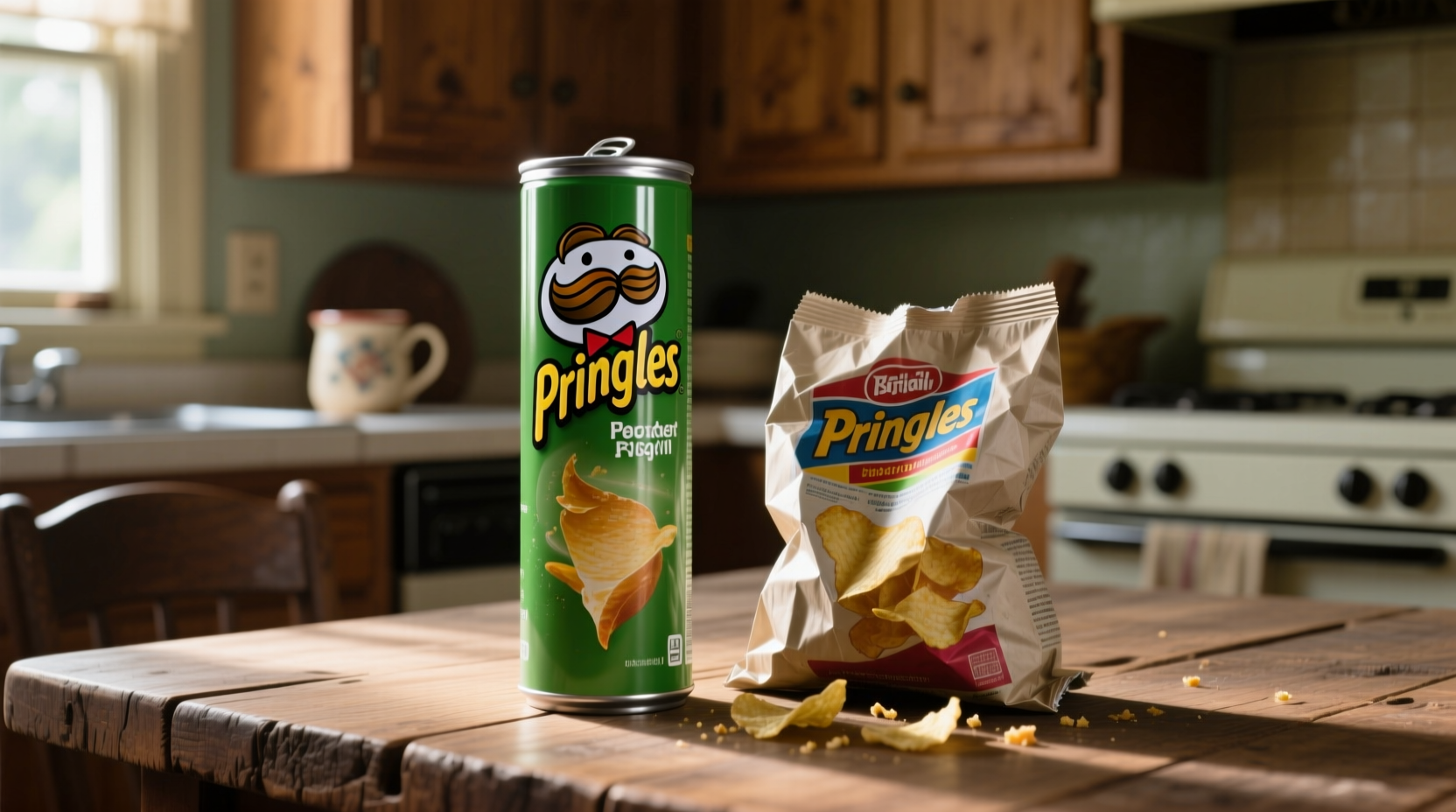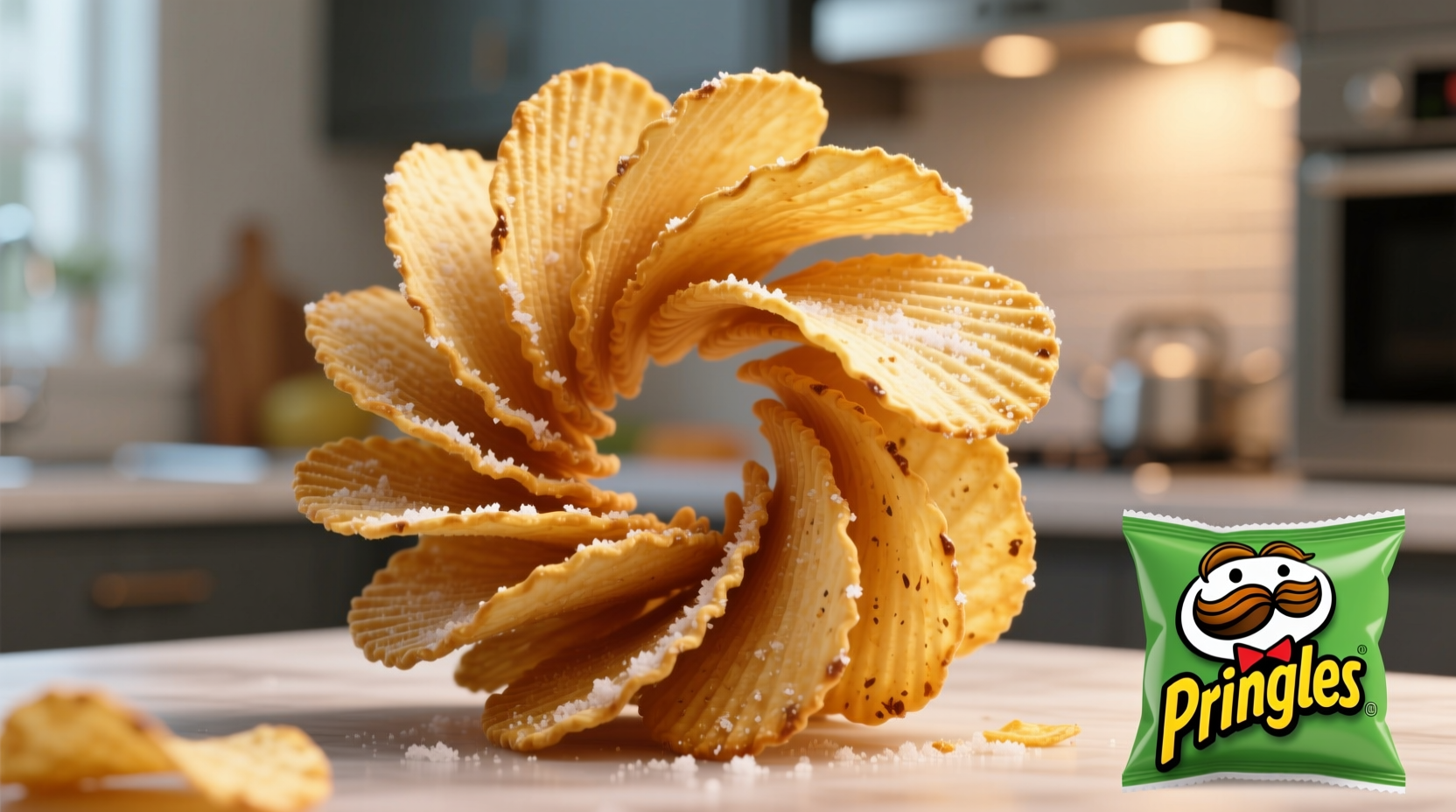Ever wondered why Pringles feel different from regular potato chips or why their packaging calls them “potato crisps”? You're not alone. This common snack has sparked debate for decades about its true classification. Let's cut through the confusion with clear facts about what makes Pringles unique in the snack world.
Why the Confusion Exists
The debate over whether Pringles qualify as potato chips stems from their unconventional manufacturing process and ingredient composition. Unlike traditional potato chips that start with whole potatoes, Pringles use a completely different production method that results in their signature uniform shape and consistent flavor.
Breaking Down the Ingredients
Understanding the fundamental difference requires examining what actually goes into each snack:
| Characteristic | Traditional Potato Chips | Pringles |
|---|---|---|
| Primary Ingredients | 100% potatoes, oil, salt | Potato flakes (42%), wheat starch, corn flour, rice flour |
| Manufacturing Process | Sliced potatoes fried in oil | Reconstituted potato dough pressed into shape |
| Shape Consistency | Irregular, natural shapes | Perfectly uniform |
| Moisture Content | Higher (more prone to breakage) | Lower (more durable) |
| Regulatory Classification | Potato chips | Potato crisps |
The FDA's Official Stance
In 1991, the U.S. Food and Drug Administration (FDA) settled the debate with a formal ruling. According to FDA regulations, for a product to be labeled as “potato chips,” it must be made from “slices or pieces of peeled potatoes.” Since Pringles are made from a dough of dehydrated potato flakes rather than sliced potatoes, they don't meet this definition.
As a result of this ruling, Procter & Gamble (Pringles' original manufacturer) had to change their labeling from “potato chips” to “potato crisps” in the United States. This regulatory distinction remains in place today under current FDA food labeling guidelines.
How Pringles Are Actually Made
The manufacturing process explains much of the difference:
- Potatoes are cooked, peeled, and dried into flakes
- Flakes are mixed with wheat starch, corn and rice flours, and oil to create a dough
- The dough is rolled thin and cut into the familiar oval shape
- Shapes are fried, then sprayed with flavoring
- Finally, they're stacked in the iconic tube packaging
This engineered process creates the consistent texture and flavor that makes Pringles distinctive but also separates them from traditional potato chips.

International Classification Differences
The classification varies by country. In the United Kingdom and many European countries, Pringles are legally permitted to be labeled as “potato chips” because EU regulations have different standards for snack classification. This explains why you might see different labeling depending on where you purchase them.
What This Means for Consumers
From a nutritional standpoint, the differences matter more than the naming:
- Pringles generally contain less fat per serving than many fried potato chips
- They have a more consistent sodium content across servings
- The reconstituted potato base affects the glycemic index compared to whole-potato chips
- Traditional potato chips often contain fewer processed ingredients
When choosing between the two, consider what matters most to you—texture consistency, ingredient simplicity, or specific nutritional factors.
The Evolution of Snack Classification
The Pringles debate reflects broader changes in food regulation as manufacturing techniques evolve. When Pringles were introduced in 1967, snack food regulations hadn't anticipated products made from reconstituted potato ingredients. The 1991 FDA ruling established important precedents for how engineered food products should be classified, influencing how many modern snack foods are labeled today.
Making Informed Snack Choices
Understanding the technical differences helps you make more informed choices based on your preferences:
- If you prioritize whole food ingredients, traditional potato chips may better suit your needs
- If consistent texture and portion control matter more, Pringles' engineering provides advantages
- Always check nutrition labels, as formulations vary significantly between brands
- Consider how each type fits into your overall dietary patterns
Regardless of classification, both products should be enjoyed as occasional treats within a balanced diet. The key is understanding what you're actually consuming rather than focusing solely on marketing terms.











 浙公网安备
33010002000092号
浙公网安备
33010002000092号 浙B2-20120091-4
浙B2-20120091-4